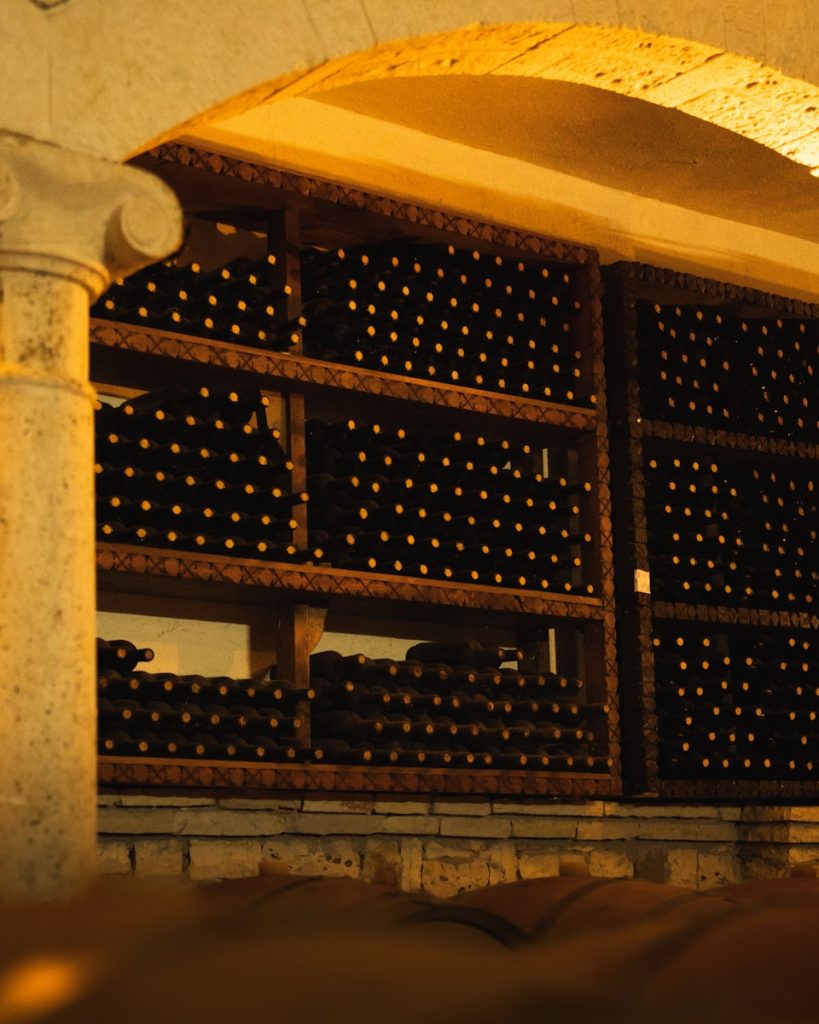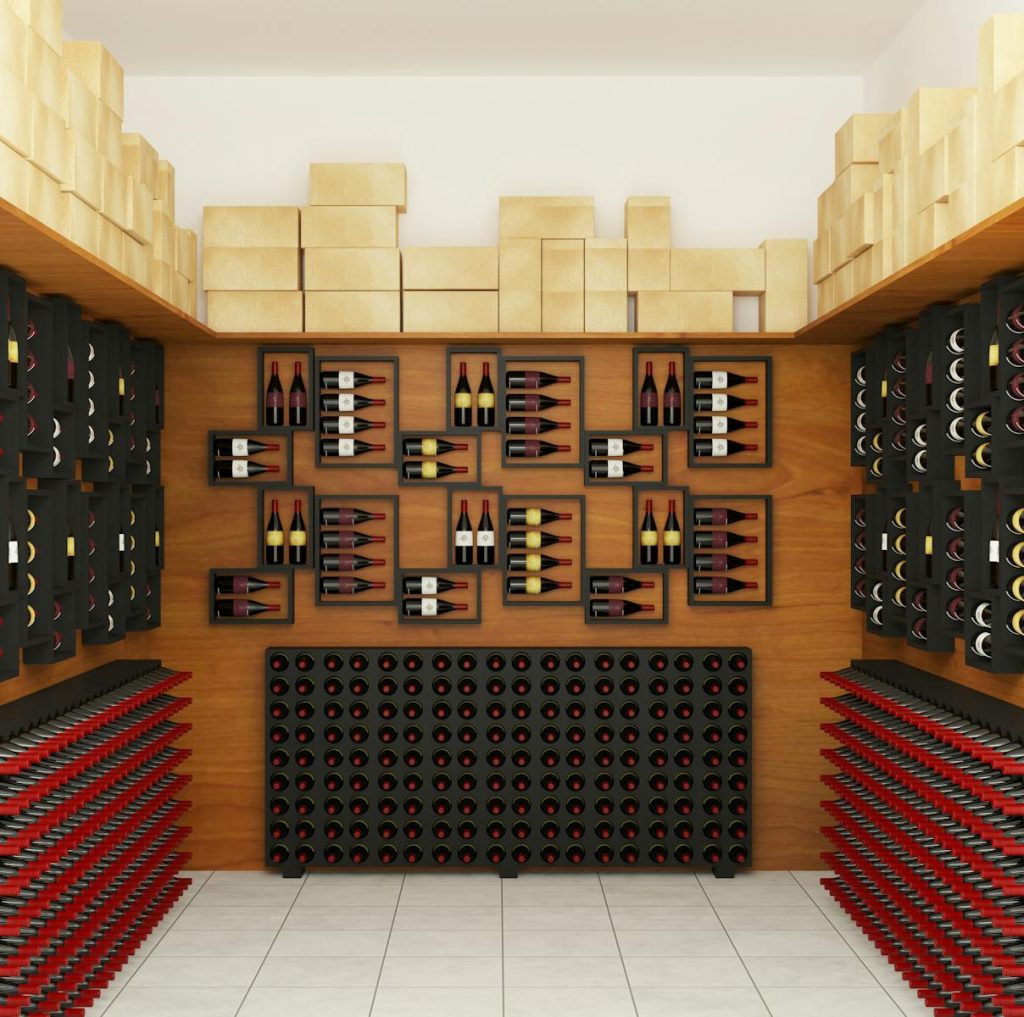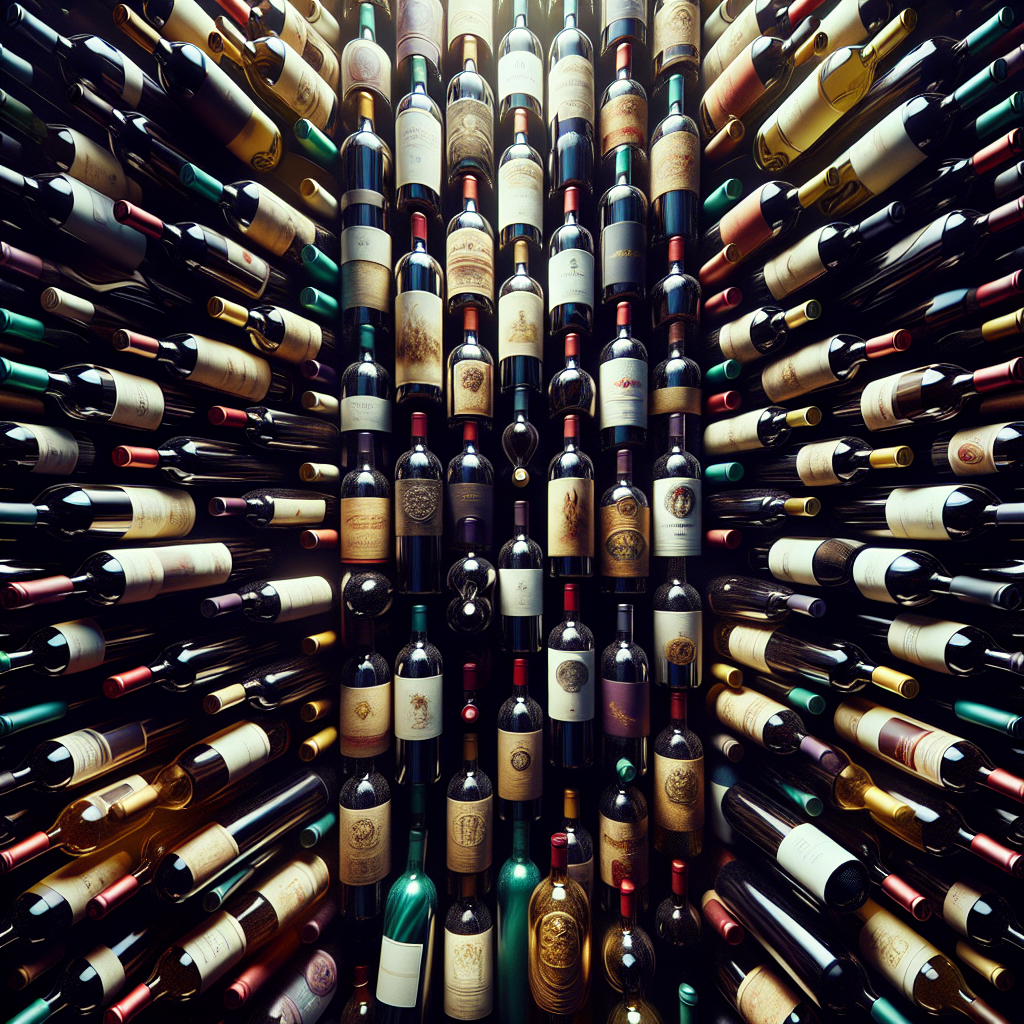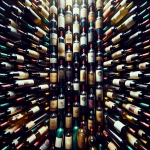Are you dreaming of starting your own wine collection but don’t know where to begin? Look no further! In this article, we will guide you through the exciting world of wine collecting, specifically focusing on Long Island NY wineries and wine. Whether you’re a wine enthusiast or a complete novice, we’ll provide you with all the essential tips and advice to get you started on your wine-collecting journey. From understanding different wine regions and varietals to mastering the art of wine tasting and storage, we’ve got you covered. So, without further ado, let’s uncork the secrets to building your own impressive wine collection!
Understanding Wine Collecting
What is wine collecting?
Wine collecting, often referred to as wine cellar or wine collection building, is the practice of acquiring and storing various bottles of wine with the intention of aging and enjoying them over time. It is an art form that combines an appreciation for the craftsmanship of winemaking with the anticipation of experiencing the evolving flavors and aromas of each bottle.
Benefits of wine collecting
There are several benefits to wine collecting that make it an enjoyable and rewarding hobby for many enthusiasts. Firstly, collecting wine allows you to experience the diverse range of flavors and styles that the wine world has to offer. As you explore different grape varieties, regions, and vintages, you will develop a deep understanding and appreciation for the world of wine.
Another benefit of wine collecting is the potential for investment. Certain wines have the ability to increase in value over time, making it a potentially profitable venture. Moreover, building a wine collection provides ample opportunities for sharing and enjoying memorable moments with friends and loved ones. Opening a well-aged bottle of wine can turn any ordinary gathering into a special occasion.
Common misconceptions about wine collecting
Before delving into the intricacies of wine collecting, it is essential to address some common misconceptions. Firstly, wine collecting is often associated with elitism or snobbery. However, wine collecting is not reserved for the wealthy or highly knowledgeable. Anyone with an interest in wine and a desire to explore its nuances can embark on this journey.
Another misconception is that wine collecting must be an expensive hobby. While there are certainly high-priced wines available, collecting wine can be done on various budgets. It all comes down to personal preferences and the level of investment one is willing to make.
Lastly, some people believe that only rare or prestigious wines are worth collecting. While rare wines can be fascinating additions to a collection, there is beauty and value in exploring lesser-known wines and discovering hidden gems. Every bottle has a story to tell, and collecting is about curating your unique narrative.
Choosing the Right Wines
Determining your preferences
The first step in building a wine collection is to determine your personal preferences. Consider the types of wines you enjoy, whether it be robust reds, crisp whites, sparkling wines, or even dessert wines. Take note of your preferred flavor profiles, such as fruity, earthy, or oaky, as this will guide your selections.
Exploring different grape varieties
To expand your knowledge and palate, delve into the vast world of grape varieties. Each grape offers distinct characteristics that can lend complexity and uniqueness to a wine. Experiment with varietals such as Cabernet Sauvignon, Chardonnay, Pinot Noir, Sauvignon Blanc, and many others. Attend tastings or visit wineries to experience firsthand the diversity of flavors and aromas that different grapes can offer.
Understanding wine regions and appellations
Wine regions and appellations play a crucial role in determining the style and quality of a wine. Research and familiarize yourself with renowned wine regions such as Bordeaux, Burgundy, Napa Valley, Tuscany, or Long Island in New York. Understanding the climatic conditions, soil composition, and winemaking traditions of these regions will help you make informed choices when selecting wines for your collection.
Researching and reading wine reviews
Reading wine reviews from reputable sources can provide valuable insights into the characteristics and quality of different wines. Publications such as Wine Spectator, Wine Enthusiast, or Decanter are excellent resources to start with. Pay attention to the tasting notes and ratings, but remember that individual preferences may vary. Use reviews as a guide, but trust your own palate when making purchasing decisions.
Considering ageability and potential value
When selecting wines for your collection, it is crucial to consider their ageability and potential value. Certain wines are known for their ability to age gracefully, developing complexity and depth over time. These wines often come from prestigious regions and are made with high-quality grapes. Research the aging potential of different wines and balance your collection with wines that can be enjoyed in their youth as well as those that require longer cellaring.

Building Your Wine Collection
Setting a budget
Before diving headfirst into building a wine collection, it is essential to set a budget. Wine collecting can be an expensive hobby, but it doesn’t have to be. Determine how much you are willing to invest and allocate funds accordingly. Keep in mind that wines vary in price, and a well-curated collection can be built within any budget.
Determining storage options
Proper wine storage is vital for the longevity and quality of your collection. Consider your available space and decide whether a dedicated wine cellar, wine refrigerator, or wine cabinet best suits your needs. Each option offers different advantages in terms of temperature control, humidity, and aesthetics. Ensure that your storage solution provides a stable and suitable environment for aging your wines.
Selecting the right wine accessories
Investing in appropriate wine accessories will enhance your overall wine-collecting experience. Start with the essentials, such as a quality corkscrew, wine glasses, and a decanter. These tools will aid in the proper serving and enjoyment of your wines. As your collection grows, you may want to consider additional accessories such as a wine aerator, wine preservation system, or specialized glassware.
Understanding the impact of temperature and humidity
Maintaining proper temperature and humidity levels is crucial for the preservation and aging of wines. Aim for a constant temperature between 50 to 59 degrees Fahrenheit (10 to 15 degrees Celsius) and a humidity level around 60 to 70 percent. Fluctuations in temperature and excessive dryness or dampness can alter the integrity and flavor of your wines. Invest in a temperature and humidity monitoring system to ensure optimal conditions.
Organizing and cataloging your collection
As your wine collection grows, organization becomes paramount. Develop a system for categorizing your wines based on type, region, or other preferences. This will facilitate easy access when searching for a particular bottle. Consider keeping a detailed catalog or inventory of your collection, noting important information such as vintage, producer, and tasting notes. Digital wine cellar management tools can be valuable for organizing and tracking your collection efficiently.
Buying and Sourcing Wine
Exploring local wine shops and wineries
Supporting local businesses and exploring nearby wine shops and wineries can be an exciting way to discover new wines. Visit tasting rooms, speak with knowledgeable staff, and join mailing lists to stay updated on new releases and special offerings. Local wine shops often provide personalized recommendations and can assist in sourcing hard-to-find or limited-edition wines.
Attending wine auctions and events
Wine auctions and events offer unique opportunities to acquire rare and sought-after wines. Attend local wine auctions or seek out reputable online platforms that specialize in wine sales. These events often showcase exceptional wines, including older vintages or wines from esteemed producers. Take advantage of tastings and auctions to expand your collection and connect with fellow enthusiasts.
Joining wine clubs and subscription services
Joining a wine club or subscription service can provide a regular supply of curated wines tailored to your preferences. Many wineries and wine retailers offer subscription programs that deliver a selection of wines to your doorstep on a monthly, quarterly, or annual basis. These subscriptions can introduce you to new labels, regions, and winemaking styles while saving you time and effort in sourcing wines for your collection.
Utilizing online wine marketplaces
Online wine marketplaces have revolutionized the accessibility of wine collecting. Platforms such as Wine-searcher, Vivino, or Wine.com offer vast selections of wines from around the world. Utilize advanced search features to find specific wines or explore their recommendations based on your preferences. Online marketplaces often provide detailed descriptions, ratings, and customer reviews to assist in making informed purchasing decisions.
Networking with other wine collectors
Networking and establishing connections with fellow wine collectors can be invaluable. Attend local wine tastings, join wine clubs, or participate in online forums and social media groups dedicated to wine collecting. Engage in discussions, share experiences, and exchange recommendations with like-minded individuals. Building a network of fellow enthusiasts will enhance your knowledge and provide opportunities for discovering new wines.
Proper Wine Storage
Understanding the importance of temperature
Temperature control is essential for preserving the quality and aging potential of wines. Fluctuations in temperature can lead to premature aging, spoilage, or loss of flavor and aroma. Maintain a stable temperature within the recommended range for long-term wine storage to ensure that your bottles age gracefully and maintain their optimal characteristics.
Choosing the right type of wine cellar
Selecting the right wine cellar or storage solution is crucial for maintaining your wine’s integrity. Traditional wine cellars offer the advantage of natural insulation, but they require proper humidity and temperature control mechanisms. Alternatively, modern wine refrigerators provide precise temperature control, convenient sizing options, and efficient energy consumption. Consider your space, budget, and aesthetic preferences when choosing between these options.
Managing humidity levels
Humidity plays a significant role in preventing the drying out of corks and maintaining the condition of wine labels. The ideal humidity range of 60 to 70 percent helps to prevent mold growth and ensures the longevity of your wine collection. Invest in a humidifier or dehumidifier to help manage humidity levels if necessary, depending on your cellar’s location and climate.
Avoiding direct sunlight and vibrations
Ultraviolet (UV) light can be detrimental to wine, causing oxidation and premature aging. Ensure that your wine storage area is shielded from direct sunlight or invest in UV-protected glass doors or shades. Additionally, minimize exposure to vibrations, as they can disrupt the aging process and negatively impact the wine’s flavors and textures. Avoid placing your wine cellar near appliances or areas prone to excessive movement.
Organizing your wine collection for easy access
Proper organization within your wine storage area enhances convenience and accessibility. Arrange your bottles in a logical manner, considering factors such as grape variety, region, or aging potential. This will make it easier to locate specific bottles or choose wines for different occasions. Utilize wine racks, shelving systems, or customized storage solutions to maximize the use of your space and facilitate an organized collection.
Wine Cellar Organization
Categorizing wines by type and region
Categorizing your wine collection by type and region can simplify the organization and selection process. Separate your wines into different sections or sections based on red, white, rose, or sparkling wines. Within each category, further categorize the wines by region or grape variety. This system allows you to easily locate specific types of wines and provides a clear overview of your collection.
Creating a labeling and tracking system
Developing a labeling and tracking system will help monitor your collection and ensure the accuracy of your inventory. Whether using pre-printed labels or creating your own, label each bottle with pertinent information such as vintage, producer, and any additional notes or ratings. Maintain a master list or utilize inventory management software to track changes in your collection over time.
Using wine inventory management software
Wine inventory management software can streamline the organization and tracking of your collection. These digital platforms allow you to create virtual cellars, maintain detailed records, and generate reports for easy reference. Some software options also provide mobile applications, allowing you to access and update your collection information on the go. Choose a software solution that suits your needs and budget, and regularly update your inventory to reflect any additions or removals.
Arranging wines for optimal aging
Understanding a wine’s optimal aging potential plays a crucial role in arranging your collection. Wines that require long-term aging should be placed in an easily accessible location to track their progress and ensure they are not overlooked. Reserve a designated section of your cellar or wine refrigerator for these bottles, taking care to arrange them in a manner that allows for proper air circulation and minimizes disturbance.
Rotating and sampling your collection
Regularly rotating and sampling your collection ensures that no wines are forgotten or past their prime. Arrange your wines in a way that encourages you to reach for different bottles rather than repeatedly selecting from a specific section. Consider creating a system where you select wines from different regions or vintages each month, encouraging exploration and a diverse tasting experience.

Enjoying and Sharing Your Collection
Learning about wine-tasting
Learning the art of wine tasting will greatly enhance your enjoyment and appreciation of your collection. Understand the different aspects to evaluate in a wine, such as visual appearance, aroma, flavor, mouthfeel, and finish. Practice tasting wines and hone your ability to identify different flavors and aromas. Attend wine-tasting events or consider taking formal wine education courses to deepen your understanding and confidence as a taster.
Pairing wines with food
Pairing wines with food creates harmonious flavor combinations that elevate the dining experience. Experiment with different wine and food pairings, considering the intensity and complexity of flavors in both the wine and the dish. Consult pairing guides or seek advice from sommeliers or experienced wine professionals to discover the best matches for your favorite wines.
Hosting wine-tasting parties and events
Share your passion for wine collecting by hosting wine-tasting parties or events. Invite friends, family, or fellow enthusiasts to explore and enjoy your collection together. You can create themed tastings based on a specific region, grape variety, or style of wine. Provide tasting notes and information about each wine to educate and engage your guests in the experience.
Sharing knowledge and experiences with others
As you build your wine collection and expand your knowledge, sharing your experiences and insights with others can be rewarding. Engage in conversations, both online and offline, with other wine enthusiasts. Share your thoughts on wines you have recently enjoyed, recommend hidden gems, or ask for recommendations. Connecting with others who share your passion can deepen your understanding and open doors to new discoveries.
Exploring wine tourism and visiting vineyards
Immerse yourself in the world of wine by engaging in wine tourism. Plan trips to renowned wine regions and visit vineyards and wineries. Take guided tours, participate in tastings, and gain firsthand knowledge of the winemaking process. Getting to know the people and places behind the wines adds depth and context to your collection and fosters a deeper appreciation for the craft.
Keeping Wine Records and Documentation
Recording purchase details and prices
Maintaining records of your wine purchases is essential for tracking the value and provenance of your collection. Create a system where you record purchase details, such as date, price, and where the wine was acquired. This information is valuable when assessing the value of your collection or if you decide to sell any bottles in the future.
Tracking wine consumption
As you enjoy your collection, keep track of the wines you consume. Note the date, occasion, and your impressions of the wine. This information allows you to revisit wines you have enjoyed and can guide future purchasing decisions based on your personal preferences.
Noting tasting notes and ratings
Develop the habit of taking tasting notes and assigning ratings to the wines you sample. Describe the wine’s appearance, aromas, flavors, and overall impression. Assign a numerical or qualitative rating based on your personal enjoyment. These notes serve as a valuable reference as you explore new wines and can assist in recalling past experiences.
Keeping up-to-date inventory records
Regularly update your wine inventory records to reflect any changes in your collection. This includes adding newly acquired wines, removing consumed or sold bottles, and updating any changes in the condition or location of your wines. Accurate and up-to-date inventory records will enable you to manage your collection effectively and make informed decisions regarding its development.
Documenting wine collection milestones
Documenting significant milestones or achievements in your wine collection is a way to celebrate and reflect on your journey as a wine collector. This could include reaching a certain number of bottles, acquiring a rare vintage, or achieving a personal cellar goal. Take photos, write journal entries, or create a scrapbook capturing these moments. It serves as a reminder of the joy and satisfaction that wine collecting brings.
Maintaining and Expanding Your Collection
Regularly inspecting and managing your cellar
Regular inspections of your wine cellar are crucial for ensuring optimal storage conditions and identifying any issues that may arise. Check temperature and humidity levels, assess the condition of corks and labels, and look for signs of mold or pest infestation. Make necessary adjustments and address any concerns promptly to safeguard the quality and longevity of your collection.
Knowing when to drink or sell aging wines
As your collection matures, it is essential to understand when wines have reached their optimal drinking window. Wines have specific aging potential and will eventually peak before declining in quality. Familiarize yourself with the aging potential of the wines in your collection and monitor their development. Consider consulting experts or experienced collectors to determine the right time to open or potentially sell aging bottles.
Exploring rare and limited-edition wines
Building an extraordinary wine collection often involves exploring rare and limited-edition wines. These unique bottles can add depth and exclusivity to your collection. Follow wine auctions, visit specialized wine shops, and join mailing lists of renowned producers to stay informed about exclusive releases or small-production wines. Acquiring rare wines requires patience, persistence, and sometimes a larger budget, but it can be immensely rewarding.
Attending wine auctions and cellar sales
Wine auctions and cellar sales offer opportunities to acquire sought-after bottles, older vintages, or wines from private collections. Attend these events to access a wide selection, often with detailed provenance and condition reports. Auctions can be an exciting way to expand your collection and potentially acquire highly desirable wines that may not be readily available elsewhere.
Continuing education and exploring new trends
To stay at the forefront of the wine-collecting world, continue your wine education and remain open to exploring new trends. Attend tastings, seminars, or workshops to expand your knowledge and encounter emerging styles or regions. Stay informed about advancements in winemaking techniques, new grape varieties, or evolving consumer preferences. Embrace the ever-evolving nature of the wine industry and adapt your collection accordingly.
Avoiding Common Mistakes
Overbuying without a plan
One common mistake in wine collecting is overbuying without a clear plan or strategy. It can be tempting to acquire numerous bottles without considering storage space or the pace of consumption. Before making purchases, evaluate your cellar capacity, budget, and the rate at which you can realistically enjoy or age the wines.
Neglecting proper storage conditions
Neglecting proper storage conditions can lead to irreversible damage to your wine collection. Inadequate temperature, humidity, or exposure to light can spoil the quality and flavor of your wines. Invest in suitable storage options and continuously monitor conditions to ensure the longevity of your collection.
Focusing only on high-priced wines
While high-priced wines can be alluring, focusing solely on this segment of the market can limit the diversity and exploration within your collection. Value and enjoyment can be found in wines of all price ranges. Keep an open mind and experiment with wines at different price points, seeking out hidden gems that may provide exceptional quality at a more accessible cost.
Ignoring personal taste and preferences
Collecting wines solely based on ratings, reviews, or perceived prestige may lead to a collection that does not align with your personal taste and preferences. Ultimately, wine collecting is about finding joy in experiencing and sharing wines that resonate with you. Trust your own palate and select wines that bring you pleasure and excitement.
Lack of research and knowledge
A lack of research and knowledge about wines and the collecting process can hinder the growth and enjoyment of your collection. Invest time in expanding your wine knowledge, and learning about different regions, grape varieties, and vintage variations. Join wine clubs, read wine publications, and engage in conversations and tastings to continuously enhance your understanding and appreciation of wine.
By following these guidelines and embracing the world of wine collecting, you will embark on a journey filled with discovery, pleasure, and the joy of sharing exceptional bottles with those around you. Start your own wine collection today and experience the beauty of wine as it evolves and captivates over time. Cheers to your wine-collecting adventure!
© 2025 by LIWine.com. Reserved all rights. This document cannot be copied or communicated in any way without LIWine.com prior written consent, whether it be electronically, mechanically, through photocopying, recording, or another medium.



Leave a Reply
You must be logged in to post a comment.